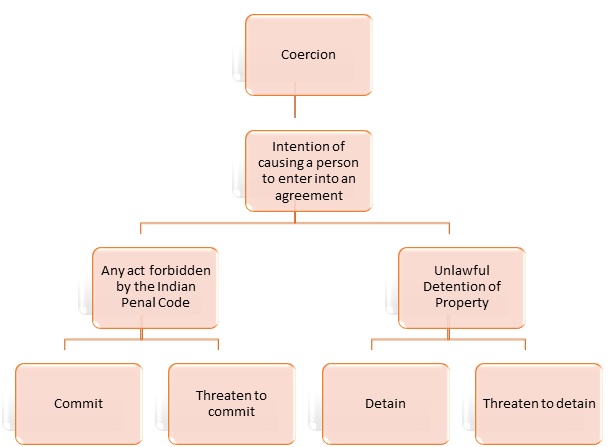How Do International Trade Agreements Address Cultural Heritage Protection and Trade of Cultural Artefacts?
Abstract
International trade agreements often
encompass a broad spectrum of issues, including the protection of cultural
heritage and the regulation of cultural artifacts' trade. This paper explores
how various international agreements address these concerns, highlighting the
balance between facilitating trade and safeguarding cultural heritage. The
analysis spans several key agreements, such as the UNESCO conventions, the
World Trade Organization (WTO) frameworks, and regional trade agreements,
examining their provisions, effectiveness, and challenges.
Introduction
The global trade of cultural
artifacts presents unique challenges, as it involves not only economic
interests but also the preservation of cultural heritage. Cultural artifacts
hold significant historical, artistic, and symbolic value, often representing
the identity and heritage of a community or nation. Therefore, international
trade agreements must carefully navigate these dual objectives. This paper
examines how these agreements address the protection of cultural heritage and
the regulation of cultural artifacts trade, analyzing their legal frameworks,
enforcement mechanisms, and the interplay between trade facilitation and
heritage protection.
Historical Context and Importance of
Cultural Heritage Protection
Cultural heritage includes tangible
assets like monuments, artifacts, and sites, as well as intangible assets such
as traditions, languages, and rituals. The protection of cultural heritage
gained prominence in the aftermath of World War II, leading to the
establishment of the United Nations Educational, Scientific and Cultural
Organization (UNESCO) in 1945. UNESCO’s mandate includes the preservation of
cultural heritage, and it has developed several conventions aimed at protecting
cultural property.
The UNESCO 1970 Convention
The UNESCO Convention on the Means of
Prohibiting and Preventing the Illicit Import, Export and Transfer of Ownership
of Cultural Property (1970) is a cornerstone in the international legal
framework for protecting cultural heritage. It obliges state parties to take
measures to prevent the illicit trade of cultural property, establish legal
frameworks for cultural property protection, and facilitate the return of
stolen artifacts.
The 2003 and 2005 Conventions
Further building on this, the UNESCO
Convention for the Safeguarding of the Intangible Cultural Heritage (2003)
focuses on preserving non-physical cultural heritage, while the UNESCO
Convention on the Protection and Promotion of the Diversity of Cultural
Expressions (2005) emphasizes the need for states to integrate cultural
policies into their development frameworks and trade agreements.
International Trade Agreements and
Cultural Heritage
World Trade Organization (WTO) and
Cultural Goods
The WTO, primarily concerned with
promoting free trade, faces challenges in balancing trade liberalization with
cultural heritage protection. The General Agreement on Tariffs and Trade (GATT)
1994, part of the WTO framework, includes provisions that can be interpreted to
protect cultural heritage. Article XX(f) of GATT permits exceptions to trade
rules necessary to protect national treasures of artistic, historic, or
archaeological value.
However, the application of these
exceptions is complex, requiring a balance between protecting cultural heritage
and avoiding protectionist misuse. The WTO’s Trade-Related Aspects of
Intellectual Property Rights (TRIPS) Agreement also plays a role, as it
includes provisions for protecting geographical indications and traditional
knowledge, which are integral to cultural heritage.
Regional Trade Agreements
Regional trade agreements (RTAs)
often include specific provisions related to cultural heritage. For instance,
the North American Free Trade Agreement (NAFTA), now succeeded by the United
States-Mexico-Canada Agreement (USMCA), contains clauses that address the trade
of cultural goods. Article 2106 of NAFTA exempts cultural industries from some
trade liberalization obligations, allowing Canada to protect its cultural
heritage through measures such as quotas and subsidies.
Similarly, the European Union (EU)
includes cultural protection clauses in its trade agreements. The EU-Korea Free
Trade Agreement, for example, includes provisions that recognize the importance
of cultural diversity and support cultural exchanges.
Challenges and Criticisms
Enforcement and Compliance
One of the main challenges in
protecting cultural heritage through international trade agreements is
enforcement. While agreements like the UNESCO conventions set out clear
obligations, the implementation and enforcement of these obligations often
depend on national governments' political will and resources. Disparities in
legal frameworks and enforcement capabilities between countries can lead to
inconsistent application of cultural protection measures.
Balancing Trade and Protection
Striking a balance between promoting
free trade and protecting cultural heritage is another significant challenge.
Critics argue that trade agreements, particularly those under the WTO, often
prioritize economic considerations over cultural protection. The potential for
cultural heritage clauses to be exploited for protectionist purposes also
complicates this balance.
The Role of Non-State Actors
Non-state actors, including
international organizations, non-governmental organizations (NGOs), and the
private sector, play a crucial role in cultural heritage protection. These
actors often provide expertise, funding, and advocacy to support the implementation
of cultural protection measures. However, their influence varies, and their
actions sometimes conflict with state policies or economic interests.
Case Studies
The Elgin Marbles Controversy
The dispute over the Elgin Marbles
exemplifies the complexities of cultural heritage protection in international
trade. The Marbles, originally part of the Parthenon in Athens, were removed by
Lord Elgin and are currently housed in the British Museum. Greece has long
sought their return, citing cultural and historical significance. This case
highlights the challenges of legal ownership, historical context, and
international diplomatic negotiations in cultural heritage disputes.
The Return of Native American
Artifacts
The Native American Graves Protection
and Repatriation Act (NAGPRA) in the United States provides a legal framework
for the return of cultural items to Native American tribes. Internationally,
the UNESCO 1970 Convention has facilitated the return of numerous artifacts to
indigenous communities, demonstrating the importance of both national and
international legal frameworks in protecting cultural heritage.
Conclusion
International trade agreements play a
critical role in protecting cultural heritage and regulating the trade of
cultural artifacts. While frameworks like UNESCO conventions provide essential
guidelines, the implementation and enforcement of these measures face numerous
challenges. Balancing trade liberalization with cultural protection requires
continuous dialogue, robust legal frameworks, and cooperation among states and
non-state actors. Future efforts should focus on strengthening enforcement
mechanisms, ensuring fair and consistent application of cultural protection
measures, and fostering greater international cooperation to safeguard the
world's cultural heritage.
References
1.
UNESCO.
(1970). Convention on the Means of Prohibiting and Preventing the Illicit
Import, Export and Transfer of Ownership of Cultural Property. Retrieved from https://en.unesco.org/about-us/legal-affairs/means-prohibiting-and-preventing-illicit-import-export-and-transfer-ownership-cultural-property
2.
UNESCO.
(2003). Convention for the Safeguarding of the Intangible Cultural Heritage.
Retrieved from https://ich.unesco.org/en/convention
3.
UNESCO.
(2005). Convention on the Protection and Promotion of the Diversity of Cultural
Expressions. Retrieved from [https://en.unesco.org/creativity/convention](https://en.unesco.org/
4.
creativity/convention)
5.
World
Trade Organization (WTO). (1994). General Agreement on Tariffs and Trade (GATT
1994). Retrieved from https://www.wto.org/english/docs_e/legal_e/gatt47_e.pdf
6.
World
Trade Organization (WTO). (1994). Trade-Related Aspects of Intellectual
Property Rights (TRIPS). Retrieved from
https://www.wto.org/english/tratop_e/trips_e/t_agm0_e.htm
7.
North
American Free Trade Agreement (NAFTA). (1994). Retrieved from
https://ustr.gov/trade-agreements/free-trade-agreements/north-american-free-trade-agreement-nafta
8.
United
States-Mexico-Canada Agreement (USMCA). (2020). Retrieved from
https://ustr.gov/trade-agreements/free-trade-agreements/united-states-mexico-canada-agreement
9.
European
Union. (2011). EU-Korea Free Trade Agreement. Retrieved from https://trade.ec.europa.eu/doclib/docs/2009/october/tradoc_145203.pdf
10. United States Congress. (1990).
Native American Graves Protection and Repatriation Act (NAGPRA). Retrieved from
https://www.nps.gov/history/local-law/FHPL_NAGPRA.pdf
Article by -
Advocate Krishna Sadavarte
LLM Student, Department of Law, Viswakarma University, Pune




Comments
Post a Comment